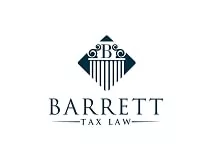Foreign property reporting requirements in Canada – A Canadian tax lawyer's guidance on T1135 obligations
When a Canadian resident holds specified foreign properties with a cost exceeding $100,000 anytime during the taxation year, he or she must file the T1135 form – Foreign Income Verification Statement for that year. This rule applies to all Canadian resident individuals, corporations, trusts and partnerships, and the due date for filing is the same as the deadline for the personal or corporation income tax return. However, for the first year that an individual became a Canadian resident, he or she needs not file T1135 for that year.
Consequences of failure to file T1135 on time
It is very important to ensure the form is filed on time as the penalties can be severe. Even if some or all of the properties were sold before the end of the taxation year, a Canadian taxpayer is still required to file the T1135 form as long as the total cost of all specified foreign properties exceeds $100,000 at any time during the taxation year. Failure to do so may result in a penalty of $25 per day, subject to a maximum of $2500 and a minimum of $100. There may be further penalties if the failure to file or errors or omissions were made knowingly or resulted from gross negligence. Furthermore, the failure to comply with the T1135 requirements may also lead to other tax consequences such as extending the normal reassessment period to your entire tax return and the review may not be limited to just the information related to your foreign property.
What properties do you need to report
Specified foreign properties that are required to be reported on the T1135 form typically include:
- Fund deposited or held in foreign bank accounts, but not US funds in a Canadian financial institution,
- shares of foreign companies, even if held in an investment account in Canada,
- shares of a Canadian corporation held outside Canada (e.g., in a brokerage account in another country),
- an interest in non-resident trusts that was acquired for consideration,
- bonds or debentures issued by foreign governments or foreign countries,
- an interest in a foreign insurance policy
- approximation of the cost amount of the property for the purpose of Form T1135,
- a property that is convertible into, exchangeable for, or confers a right to acquire a property that is specified foreign property (e.g., a call optionwhich has been purchased),
- interests or units in offshore mutual funds,
- tangible and intangible property such as cryptocurrency,
- real estate situated outside Canada (unless mainly held for personal use and enjoyment), and
- other income earning foreign property.
Specified foreign property does not include:
- any foreign property held in registered accounts such as RRSPs, RRIFs, RESPs, locked-in registered plans and TFSAs,
- units of Canadian mutual fund trusts or mutual fund corporations that invest in foreign securities or are held in a foreign currency,
- assets used mainly for personal use and enjoyment such as vacation homes, vehicles, jewellery, artwork of any other such property, and
- property used or held exclusively in carrying on an active business such as a business (e.g. foreign real estate where you operate your active business).
Note that vacant land or unoccupied building may still qualify for specified foreign property if they do not fit the exclusion list.
What information should be reported
The information that must be reported on the T1135 form depends on the total cost of all specified foreign properties. There are two reporting methods, simplified and detailed reporting method.
A. Simplified reporting method
The T1135 form requirement first started after the year 1997 and was revised for the 2014 taxation year to streamline foreign asset reporting for certain taxpayers. For 2015 and later taxation years, if the total cost of all specified foreign properties in the year is more than $100,000 but less than $250,000, a taxpayer can report the assets to the CRA under the simplified foreign asset reporting method in Part A of the T1135. A taxpayer must indicate:
- the type of property by tick-marks,
- the top 3 countries (by indicating country code) based on the maximum cost amount of specified foreign property held during the year,
- the total income from all specified foreign property, and
- the amount of gain or loss from the disposition of all specified foreign property.
B. Detailed reporting method
Those who own specified foreign properties with a total cost of more than $250,000 during any time of the year, they need complete Part B of the T1135 form under the detailed reporting method. The form is divided into seven different types of specified foreign property:
- Funds held outside Canada,
- Shares of corporations that are non-residents,
- Indebtedness owed by non-residents,
- Any interest in non-resident trusts,
- Any real property outside Canada, other than personal use or real property used in an active business,
- Other property outside Canada, and
- Property held in account with a Canadian registered securities dealer or a Canadian trust company.
Pro tax tips – a voluntary disclosure application may reduce penalties
Although failure to comply with T1135 requirements can incur a huge penalty, you can still submit a voluntary disclosure application to reduce the penalty if eligible. To qualify for the voluntary disclosure program, you must meet certain criteria and should always seek professional advice from an experienced Canadian tax lawyer. If you have failed to file T1135 form on time and would like to discuss whether the voluntary disclosure program applies to you, contact our office to speak with an expert Canadian tax lawyer for guidance.
The content of this article is intended to provide a general guide to the subject matter. Specialist advice should be sought about your specific circumstances.

